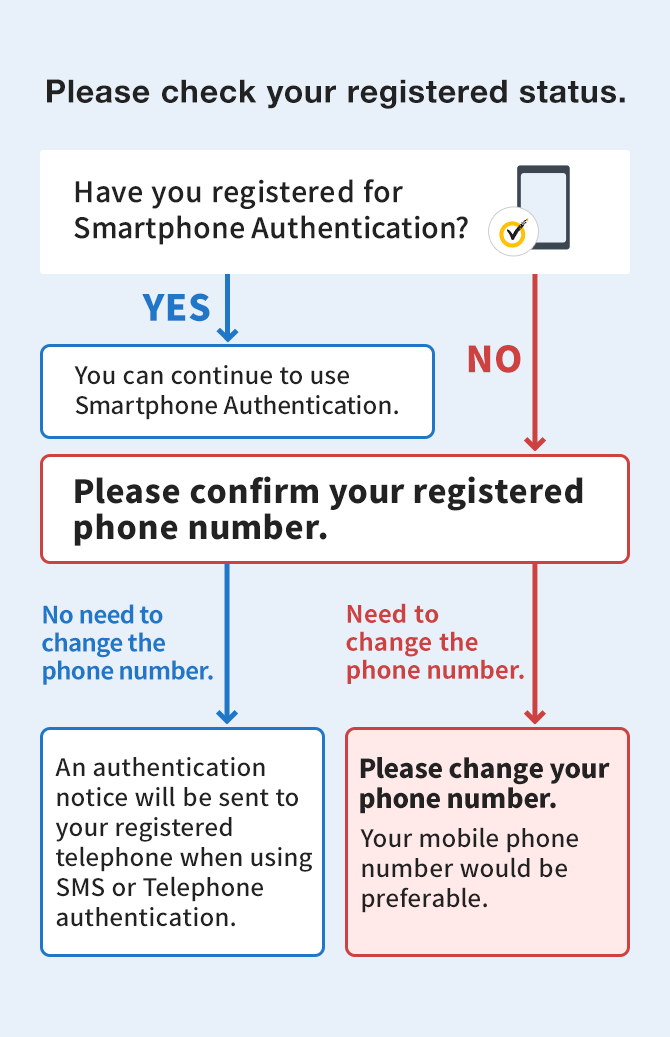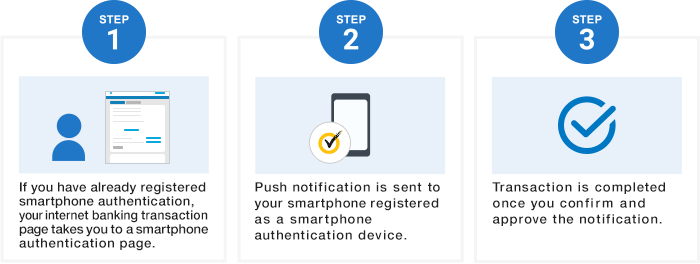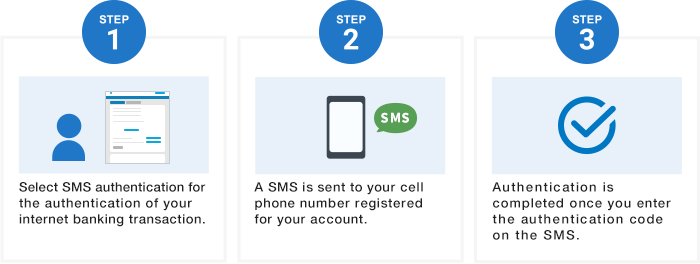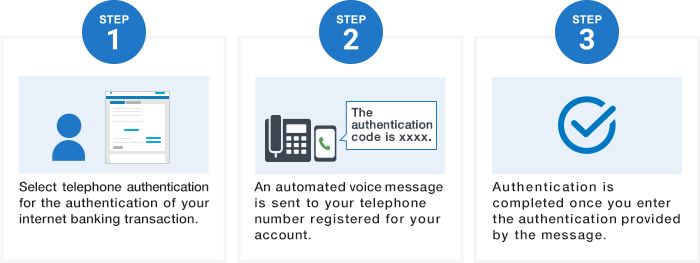Termination of the Issuance of Security Code Cards and Addition of New Authentication
Thank you for using SBI Shinsei Bank.
We terminated issuing security code cards on May 26, 2023 and implemented new authentication using SMS or audio calls starting from May 28, 2023 to enhance the security and convenience for our internet banking service (PowerDirect).
On May 28, 2023, authentication using a security cord card were replaced by the existing smartphone authentication and new SMS/telephone authentication. This allows customers to conduct transactions more easily under strong security, without requiring their security cord card for PowerDirect transactions.
Please register smartphone authentication and confirm your telephone number (your cellphone number is desirable) to continue your transactions. Customers who have already registered smartphone authentication can continue using it.


- You need to deregister your smartphone authentication if you wish to use SMS authentication or telephone authentication instead of smartphone authentication.
What are Smartphone Authentication, SMS Authentication and Telephone Authentication?
【Smartphone Authentication】
Smartphone authentication is available for customers who have registered it in advance. Transactions are completed once customers approve a push notification sent to their smartphone registered as an authentication terminal.
Click here for details of smartphone authentication


【SMS Authentication and Telephone Authentication】
Customers who have not registered smartphone authentication must select either SMS authentication or telephone authentication at the time of target internet banking transactions. SMS authentication sends a SMS with an authentication code to your cell phone number registered for your account, and authentication is completed once you enter the code. Telephone authentication provides an authentication code through an automated voice message to your telephone number registered for your account, and authentication is completed once you enter the code.
【SMS authentication】


【Telephone authentication】


- SMS are sent to your cell phone number registered with us. Customers who have registered a number other than a cell phone number are requested to select telephone authentication since SMS authentication is not available. Customers who wish to use SMS authentication or telephone authentication are requested to confirm whether their telephone number registered with us is correct.
Procedures and Authentication Methods for Internet Banking
| Current | After Changing The Authentication Method |
|
|---|---|---|
| Authentication Methods |
|
|
| Procedure |
|
|
| Current | After Changing The Authentication Method |
|
|---|---|---|
| Authentication Methods |
|
|
| Procedure |
|
|
*1 Since security code cards will no longer be issued from May 26, 2023, the initial log-in method for customers who have opened their new SBI Shinsei Bank account will be sent to their email address registered with us.
*2 If you forget your PowerDirect password, please contact our Contact Center. Please click here for details.
Your telephone number registered with us can be changed through internet banking or with the application form.
Change / Check your registered phone number via internet Banking
Customers who do not have a security code card
(Email)
Depending on the inquiry it may take several days before we can answer your question.
(Email)
Depending on the inquiry it may take several days before we can answer your question.
Frequently Asked Questions
What is Smartphone Authentication?
Smartphone authentication is a free-of-charge service which allows customers to confirm and approve their important transactions with Symantec VIP Access, a dedicated application installed on their smartphone.
Will I no longer be able to conduct internet transactions if my smartphone authentication is not registered at the time of the launch of the new authentication methods?
You can use telephone authentication if you have not registered smartphone authentication. Once it is registered, smartphone authentication allows you to conduct transactions easily since you do not need to enter letters and numbers on your security cord card. Illegal transactions can also be prevented because transactions require final approval with your smartphone. Smartphone authentication is therefore strongly recommended because it enhances user convenience and security.
What is Telephone Authentication?
Telephone authentication confirms and approves customers' important transactions by, for example, calling your telephone number registered with us. Details will be provided when it is launched.
I do not have a smartphone. What happens after Security Cards are abolished?
The new telephone authentication is also available for non-smartphones.
Can I use my landline telephone number for Telephone Authentication?
You can register your landline telephone number, but your cell phone number is recommended for authentication when you are not at home.
How can I confirm my telephone number registered with SBI Shinsei Bank?
Please log in to PowerDirect. You can confirm and change your telephone number from "Registered Information".
Can I discard my Security Code Card?
Yes, you can discard your Security Code Card.
Updated: August 15, 2023
SBI Shinsei Bank
